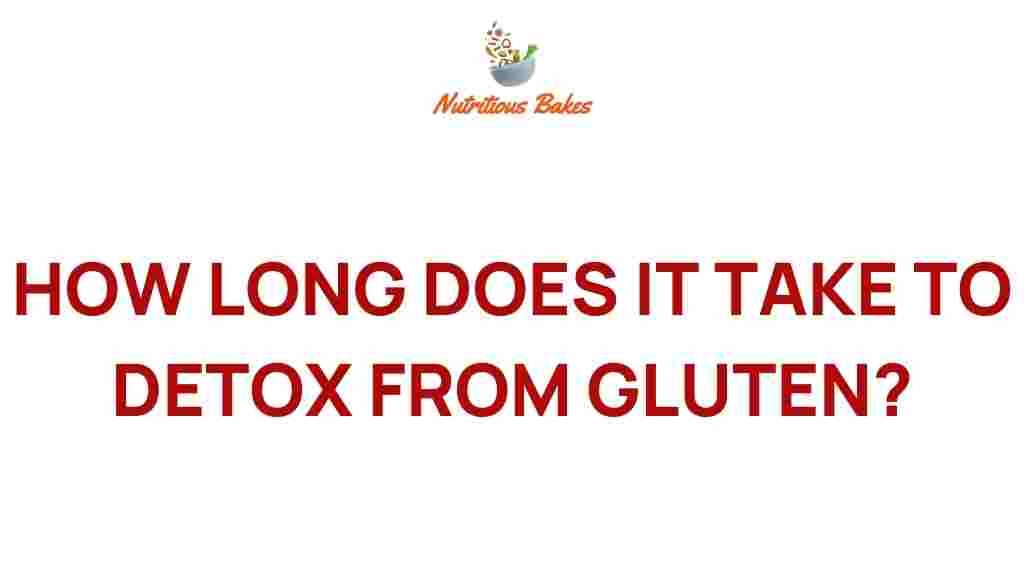The Gluten Detox Timeline: How Long Will It Take to Feel Better?
Embarking on a gluten detox can be a life-changing decision for many individuals experiencing symptoms related to gluten intolerance or celiac disease. Understanding the gluten detox timeline, what to expect during recovery, and how to adjust your diet for optimal health and wellness is crucial. This article will guide you through the stages of a gluten detox, helping you to navigate your journey toward better health.
What is a Gluten Detox?
A gluten detox involves eliminating gluten from your diet to assess its impact on your health. Gluten is a protein found in wheat, barley, and rye. For those with gluten sensitivities or celiac disease, consuming gluten can lead to various adverse health effects, including digestive issues, fatigue, and inflammation. A gluten detox allows your body to reset and recover from the negative effects of gluten.
The Symptoms of Gluten Sensitivity
Before starting a gluten detox, it’s essential to identify the symptoms associated with gluten sensitivity. Common symptoms include:
- Abdominal pain and bloating
- Diarrhea or constipation
- Fatigue and brain fog
- Headaches
- Skin rashes
- Joint pain
- Weight loss or gain
If you experience any of these symptoms, it might be time to consider a gluten detox.
The Gluten Detox Timeline
Understanding the gluten detox timeline can help you prepare for the changes your body will undergo. Here’s a breakdown of the typical recovery stages:
Week 1: Initial Withdrawal
During the first week of your gluten detox, you may experience withdrawal symptoms as your body adjusts to the absence of gluten. Common symptoms include:
- Increased fatigue
- Headaches
- Cravings for gluten-containing foods
Stay hydrated and consider incorporating gluten-free alternatives to help ease cravings.
Weeks 2-3: Adjustment Period
By the second week, your body begins to adjust to a gluten-free diet. Many individuals report a decrease in symptoms such as bloating and digestive discomfort. During this period:
- Focus on whole foods: Fruits, vegetables, lean proteins, and gluten-free grains.
- Monitor your symptoms: Keep a journal to track your progress.
Some may experience detox symptoms like mood swings or irritability, but these should start to diminish as your body adapts.
Weeks 4-6: Healing Phase
As you enter the healing phase, you may notice significant improvements in your overall health. Symptoms like fatigue and digestive issues should continue to subside. This period is crucial for rebuilding your health:
- Incorporate nutrient-dense foods: Focus on foods rich in vitamins and minerals.
- Consider supplements: Consult with a healthcare provider for recommendations.
Your energy levels should improve, and you may feel more mentally clear. However, some individuals may still experience lingering symptoms, indicating a need for further dietary adjustments.
Weeks 6-12: Long-Term Recovery
By the sixth week, many individuals report feeling significantly better, with most symptoms alleviated. The final recovery phase may take up to 12 weeks or longer for some individuals. During this time:
- Evaluate your diet: Ensure it is balanced and includes a variety of gluten-free foods.
- Maintain a gluten-free lifestyle: Avoid cross-contamination and read labels carefully.
Continue to monitor your health, and if symptoms persist, consider consulting a healthcare professional for further evaluation.
Tips for a Successful Gluten Detox
To maximize the benefits of your gluten detox, consider the following tips:
- Plan your meals: Prepare gluten-free meals in advance to avoid temptation.
- Educate yourself: Learn to read food labels and identify hidden sources of gluten.
- Stay active: Regular physical activity can help improve your mood and overall well-being.
- Join a support group: Connecting with others on a gluten-free journey can provide motivation and tips.
Troubleshooting Common Issues
Sometimes, individuals may encounter challenges during their gluten detox. Here are some common issues and solutions:
Persistent Symptoms
If symptoms persist beyond the detox timeline, consider the following:
- Evaluate your diet: Ensure you are not consuming hidden gluten in processed foods.
- Consult a healthcare professional: Get tested for celiac disease or other food sensitivities.
Emotional Cravings
Cravings for gluten-containing foods can be strong. To combat this:
- Find alternatives: Experiment with gluten-free recipes that satisfy your cravings.
- Practice mindfulness: Engage in meditation or stress-reduction techniques.
Social Situations
Eating out or attending social events can be challenging. To navigate these situations:
- Communicate your dietary needs: Inform hosts or restaurant staff about your gluten-free requirements.
- Bring your own food: If unsure about options, bring a gluten-free dish to share.
Conclusion
Understanding the gluten detox timeline is essential for anyone considering a gluten-free lifestyle. While the initial stages may be challenging, the long-term benefits for health and wellness are worth the effort. By following a structured detox plan, monitoring your symptoms, and making necessary dietary adjustments, you can successfully navigate your gluten detox journey.
For further information on nutrition and gluten-free diets, consider checking out resources from the Gluten Intolerance Group. Remember, your health is a priority, and a gluten detox could be the first step toward a healthier you!
For more tips on healthy eating and nutrition, visit our wellness blog for guidance and support.
This article is in the category Diet and created by NutritiousBakes Team
